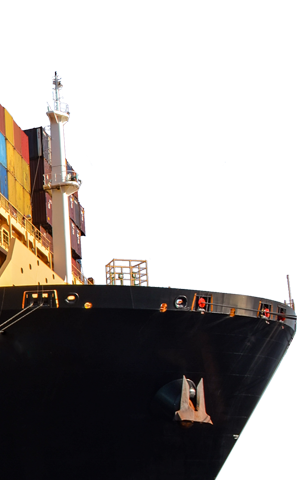Harbor Deepening
- Home
- >
- Cargo
- >
- Port Improvements
- >
- Harbor Deepening
The Jacksonville Harbor Deepening Project was completed through Blount Island in May 2022, providing a 47 foot channel depth for vessels calling JAXPORT.
The $420 million project deepened the Jacksonville shipping channel from its previous depth of 40 feet (12.2 meters) to a depth of 47 feet (14.3 meters). The project included construction of a vessel turning basin that now allows larger ships to turn around at Blount Island berths.
A deeper harbor is essential to meet the needs of larger cargo ships transiting the Suez and Panama canals as those vessels deliver cargo to JAXPORT terminals. A 47-foot depth for the federal channel positions JAXPORT as the first U.S. East Coast port of call for fully loaded post-Panamax class vessels.
In coordination with deepening, JAXPORT has also completed $100 million in berth enhancements to enable the SSA Jacksonville Container Terminal at Blount Island to simultaneously accommodate two post-Panamax ships.
Table of Contents
OVERVIEW
The U.S. Army Corps of Engineers (USACE) conducted a comprehensive, years-long economic, engineering, and environmental study of the project, which began construction in Feb. 2018. Deepening through Blount Island was completed in May 2022, seven months ahead of schedule.
The Jacksonville Harbor Deepening project was divided into four segments, contracts A-D, which make up the full length of the 13-mile federally authorized project. The current funding model covered completion of the project’s first 11 miles (contracts A, B and C).
Contract A: First 3 miles – Complete
Contract B: 5 miles – Complete
Contract C: Final 3 miles through Blount Island – Complete
Contract D: Authorized and under review
The deepening project included construction of a new turning basin adjacent to the Blount Island Marine Terminal that allows larger vessels to turn at Blount Island berths. The turning basin is slightly larger than the turning basin at the port’s Dames Point Marine Terminal, which routinely turns vessels of 1,100 feet (335.3 meters) in length.
The Jacksonville deepening project is the first project of its kind in the United States to include funding from a private business. Funding sources include the federal government, the State of Florida, the City of Jacksonville, JAXPORT, and private partner SSA Atlantic.
HARBOR DEEPENING FACTS
- JAXPORT currently supports more than 138,000 jobs throughout the region and creates $31 billion in economic impact every year.
- JAXPORT has grown Asian container volumes nearly 100 percent since 2012.
- Local jobs associated with JAXPORT’s Asian business grew more than 57 percent in a five-year period.
- These jobs and this business depend on harbor deepening to accommodate more cargo aboard today’s bigger ships.
- More than 15,000 jobs are created or protected by this project.
- JAXPORT’s leadership worked diligently to keep this project on time, reducing the scope and ensuring that the returns far outweigh the costs.
- The best environmental modeling in the world, plus peer review by scores of independent scientists, advocates for the environmental safety of the full project design.
More information about the Harbor Deepening project is available on the USACE website.
Recent News
- Jacksonville Harbor Deepening Project complete through JAXPORT’s Blount Island Marine Terminal
- Global shipping line SeaLead brings first U.S. East Coast container service to JAXPORT
- JAXPORT outlines strategic growth across cargo terminals and business lines during sold-out State of the Port address
- JAXPORT awards $48 million construction contract for Blount Island modernization project
- Federal and elected officials, JAXPORT and SSA Marine break ground on $238.7 million container terminal
- Jacksonville University and JAXPORT launch St. Johns River education initiative
Resources
-
Benefit/Cost Analysis for the Deepening Project of the St. Johns River – Nov. 2015
-
Presentation: The Economic Impact of the Port of Jacksonville – Aug. 2014
-
Executive Summary: The Economic Impact of the Port of Jacksonville – Aug. 2014
-
Full Report: The Economic Impact of the Port of Jacksonville – Aug. 2014
-
Peer Review of the Impact Modeling Regarding Dredging to 47 feet
-
Presentation: The Decision to Pursue a 47 foot Channel Depth
-
Assessment of Preferred Channel Depth for the St. Johns River
-
Business and Market Analysis of the Jacksonville Port Authority
-
The Local and Regional Economic Impacts of JAXPORT – April 2009


